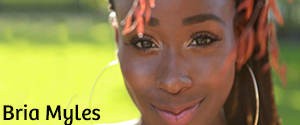Indochine's Top Shelf
In Urban Modeling It's All About the Body | Video Vixens | Indochine's Top Shelf
In Urban Modeling It's All About the Body
08/17/09 12:59 AM Filed in: Video Vixens
If you wanna be an urban model, you’d better be a
brick house, because it’s going to be a tough road
ahead if you’re not. Don’t get me wrong, you might
get a little shine if you’ve got just an
okay body. But you won’t be remembered or in demand
like Maliah Michel or Bria Myles. Take Khrysti Hill for example. She
hasn’t done anything new in over a year. Yet,
while other girls are dancing around half naked
on Youtube trying to catch a break, the die hard
fans are still pining away for new photos of
Khrysti. That’s because she epitomizes what the
market wants.
So what if you don’t have a great body? What if you have polite, demur curves. Be a commercial actress. That’s where ethnic women with pretty faces and petite bodies do best. You have to remember that urban modeling began because up until 10 years ago, the only place a woman like Bria Myles got props was on the streets of her neighborhood or in the club. No magazine would dare feature her on their pages (except maybe Jet), let alone a cover. But after J Lo and the birth of hip hop, a small chasm finally opened up in the mainstream for truly curvy models. The women guys had discussed at the barbershops for years were finally acknowledged in a legitimate way.
About two years ago, in rebuttal to what seemed like a tidal wave of ridiculously voluptuous women trying to get in the business (the Buffie effect), the magazines started trying to force more svelte models upon us, in an attempt to appease their advertisers no doubt. (Advertisers consider women who look like Buffie and Bria near porn.) Guess what? It didn’t take. The origin of this market was thick women and that’s what it will remain until it disappears. Models built like Chanta Patton can always find work in commercials or Maxim magazine or at Hooters. But girls like Khrysti only have this market, and it’s loyal to them till the very end.
Khrysti Hill’s Twitter page.



So what if you don’t have a great body? What if you have polite, demur curves. Be a commercial actress. That’s where ethnic women with pretty faces and petite bodies do best. You have to remember that urban modeling began because up until 10 years ago, the only place a woman like Bria Myles got props was on the streets of her neighborhood or in the club. No magazine would dare feature her on their pages (except maybe Jet), let alone a cover. But after J Lo and the birth of hip hop, a small chasm finally opened up in the mainstream for truly curvy models. The women guys had discussed at the barbershops for years were finally acknowledged in a legitimate way.
About two years ago, in rebuttal to what seemed like a tidal wave of ridiculously voluptuous women trying to get in the business (the Buffie effect), the magazines started trying to force more svelte models upon us, in an attempt to appease their advertisers no doubt. (Advertisers consider women who look like Buffie and Bria near porn.) Guess what? It didn’t take. The origin of this market was thick women and that’s what it will remain until it disappears. Models built like Chanta Patton can always find work in commercials or Maxim magazine or at Hooters. But girls like Khrysti only have this market, and it’s loyal to them till the very end.
Khrysti Hill’s Twitter page.






